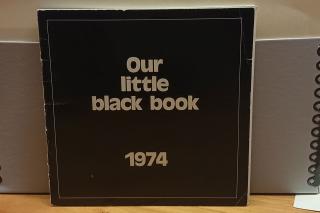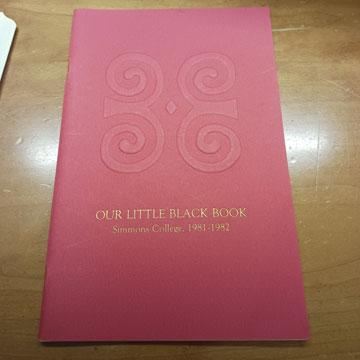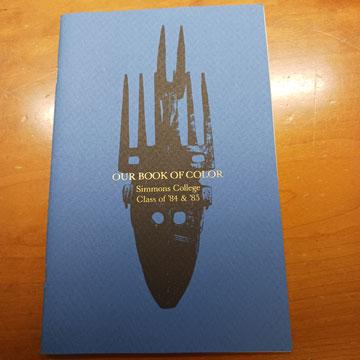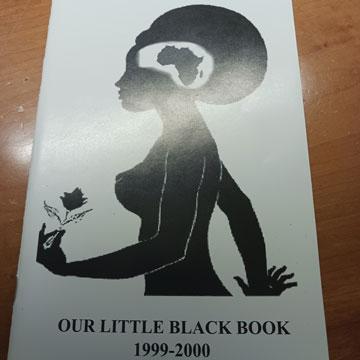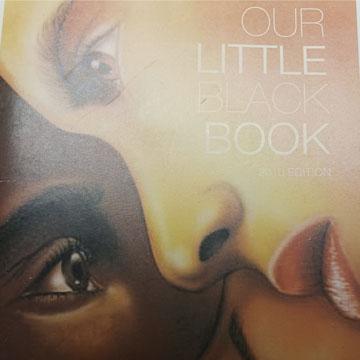The Little Black Book (or, Our Little Black Book), a yearbook for Black students, was first published in 1974 to capture the service, time, and growth of the Black experience at Simmons. Originally Lynne White’s 1974 senior project in Communications, the Book provides a chronicle of Simmons College’s Black community. We take a look at the origin and significance of Our Little Black Book and the history of the Black community at Simmons.
“Back then, we considered ourselves fighters for Civil Rights,” recalls Lynne White ’74, who created the first Little Black Book (or LBB) during her time at Simmons. “We were coming into our own identities and wanted to form our own society and fight for our own rights on campus. We were finding a way of telling our stories, a way to be honored instead of discriminated against. We needed to make our stories and voices known.”
Striving for an American Dream that had already excluded their parents and grandparents through discrimination, redlining, and school segregation, among other social injustices, Black students at Simmons were ready for classes that resonated with them, and an acknowledgment that Black history is a vital part of American history. This included the establishment of the Black Student Organization (BSO), the creation of an African Studies program, and expanded recruitment efforts to encourage Black women to attend Simmons.
“I was a part of that cultural revolution on campus, and I thought it would be good to create our Little Black Book, to show that what we were doing was important,” says White. “We wanted to show those coming after us that you can reach goals that your grandparents could only hope for! We were trying to get to the mountaintop in our high heels and afros.”
That first Little Black Book sparked a tradition that continues, fifty years later. “The Little Black Book is more than a yearbook,” says Professor of Practice and MSW Program Director Gary Bailey, “it is a hope-book.”
Visiting the Collection at the Simmons Archives makes the fruition of that hope apparent. “It’s a catalog of success, in many ways,” notes Bailey. “Some people who have done extremely important work in the world were here at Simmons. And that’s just touching the surface.” Students featured in the Books include Karen Young-Thomas ’77, Pamela Sneed-Cook ’77, Carol Waller-Pope ’74, Millicent Gorham ’76, Leslie Morris ’75, and Gwen Ifill ’77. As Bailey says, “[The Little Black Book] serves as an important marker for Black students here at Simmons and the power of their presence.”
Past President of the African-American Alumnae/i Association (AAAA) Kenyora Lenair Parham ’10 served as Sister of the Little Black Book during her sophomore year before becoming President in her junior and senior years, as part of her involvement with the Black Student Organization (BSO) at Simmons. “I observed how information and wisdom were passed down from one student leader to another, creating a sense of continuity and fostering a strong connection among the members,” says Parham, who saw the LBB as pivotal to preserving the legacy of Black students, faculty, and staff at Simmons. “In a predominantly white institution, where historic protests and demonstrations were necessary to demand culturally-responsive resources and representation, the Little Black Book became a symbolic cornerstone of our identity.”

